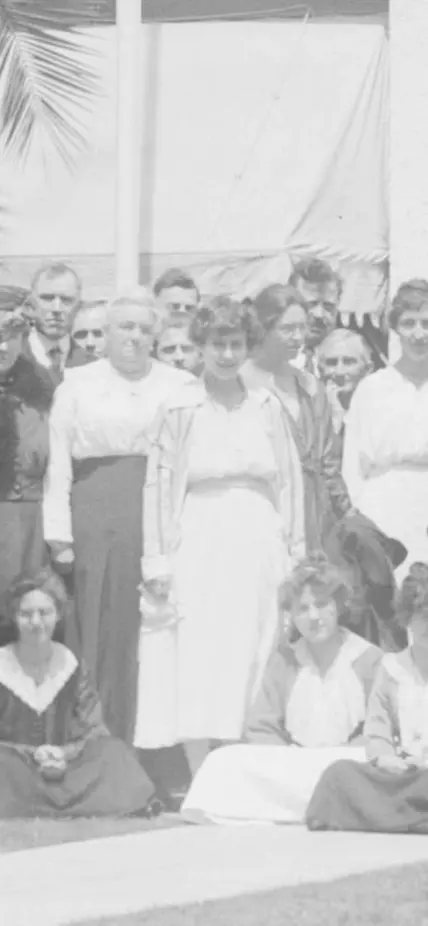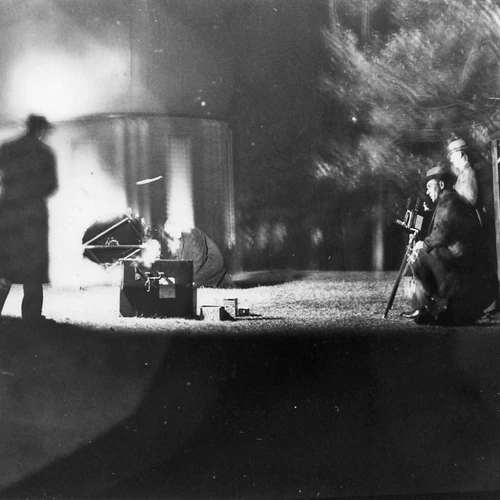Our History
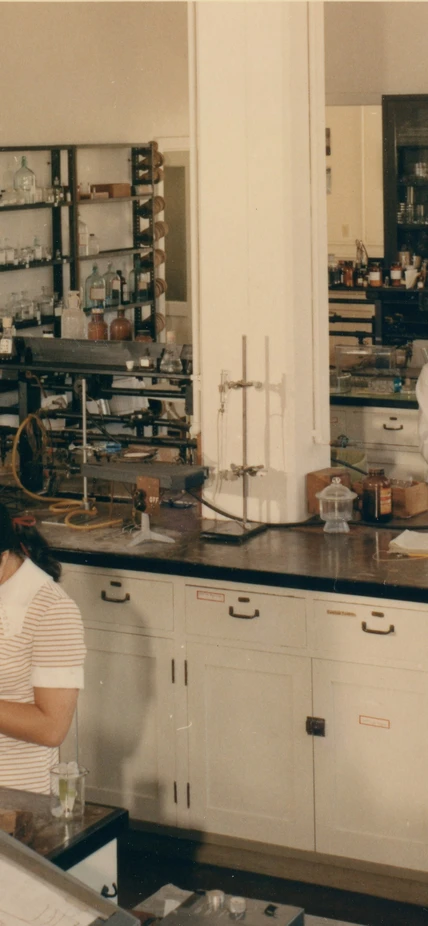
Timeline of Carnegie History
Timeline
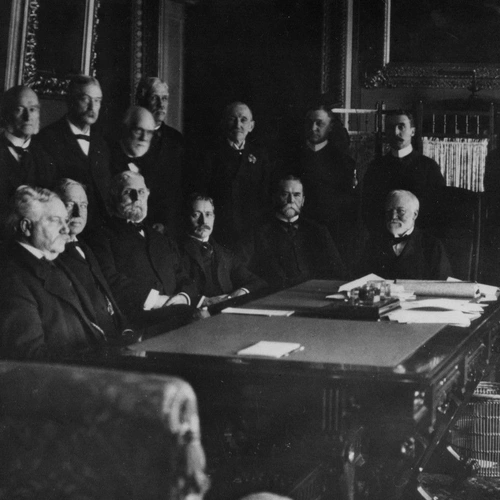
Andrew Carnegie establishes the Carnegie Institution for Science, then called the Carnegie Institution of Washington, with a $10 million gift.
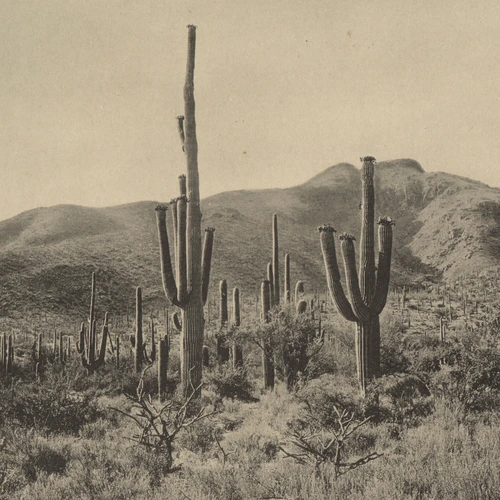
The Desert Lab, dedicated to the study of desert ecosystems, is established outside Tucson, Arizona.
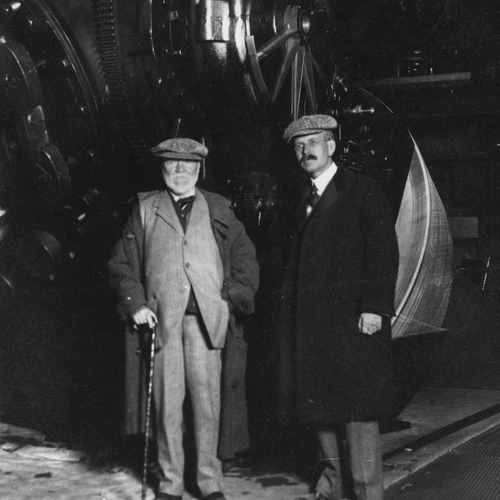
Carnegie funds George Ellery Hale's proposal to build the Mount Wilson Solar Observatories in the mountains overlooking Pasadena.
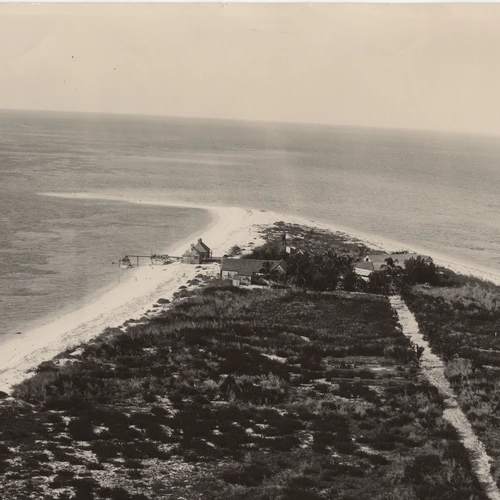
Carnegie establishes a tropical marine biology laboratory at Dry Tortugas Island where researchers conducted experimental work in ecology, regeneration, and growth, and in-depth investigations of coral reefs.
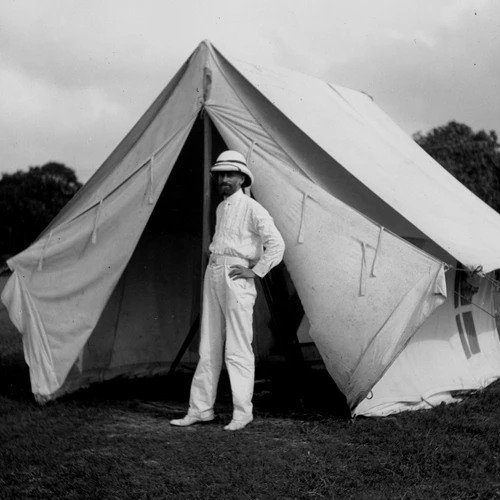
Carnegie funds Louis Agricola Bauer and the Department of Terrestrial Magnetism to map the variations in the Earth's magnetic field. From 1905-1945, DTM undertook a World Magnetic Survey with 200 land-based expeditions and ten ocean cruises.
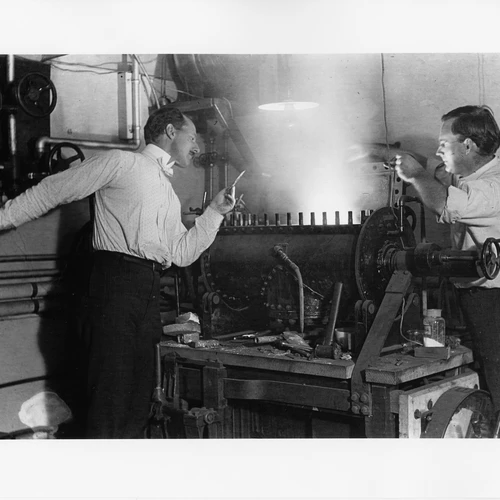
Carnegie establishes the Geophysical Laboratory to investigate the physical and chemical properties of rocks and minerals.
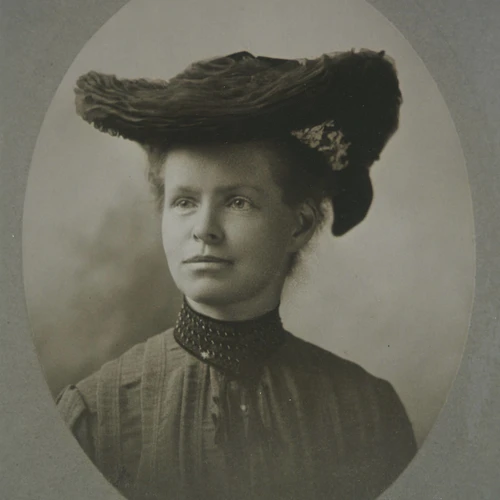
Nettie Stevens' revolutionary report provides evidence that the X and Y chromosomes are associated with sex determination.
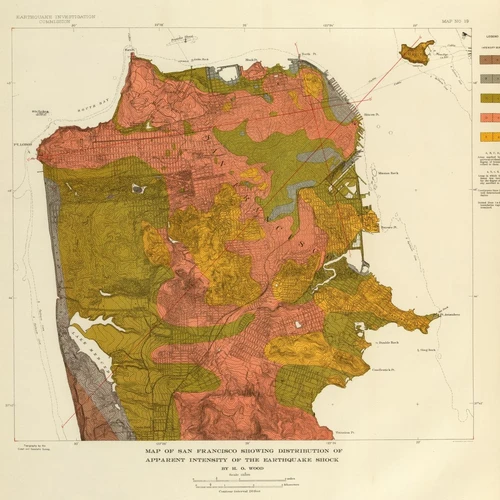
Following the San Francisco Earthquake, Carnegie funds the first integrated scientific investigation of earthquakes in the U.S.
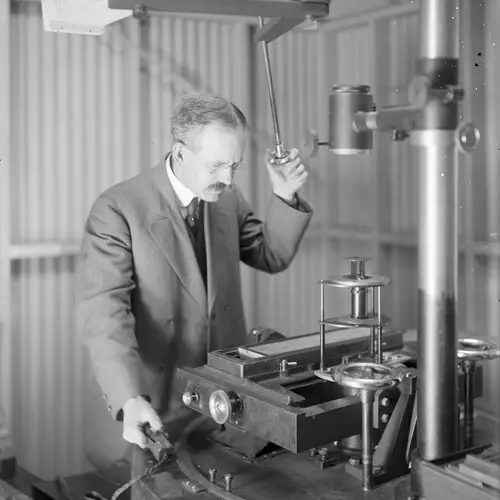
Aided by a spectroheliograph of his own design, George Ellery Hale discovers that sunspots are intense magnetic fields. This discovery was the first detection of a magnetic field beyond that of Earth.
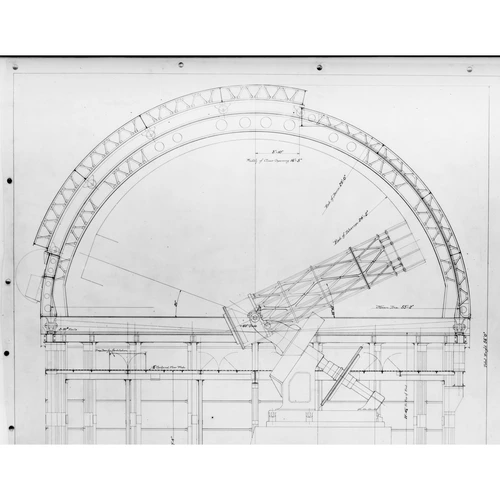
The 60-inch reflecting telescope at Mount Wilson Observatory sees first light.
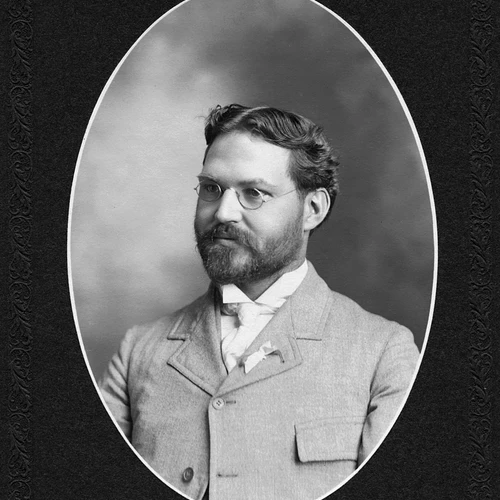
George Shull's research establishes the principles that underpin the creation of hybrid corn.
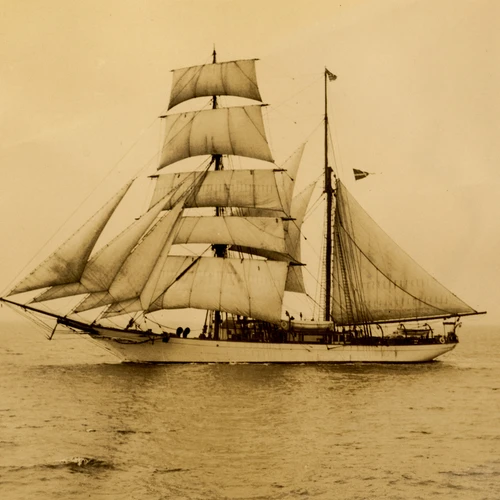
The nonmagnetic ship Carnegie is launched to survey the Earth's magnetic field at sea.
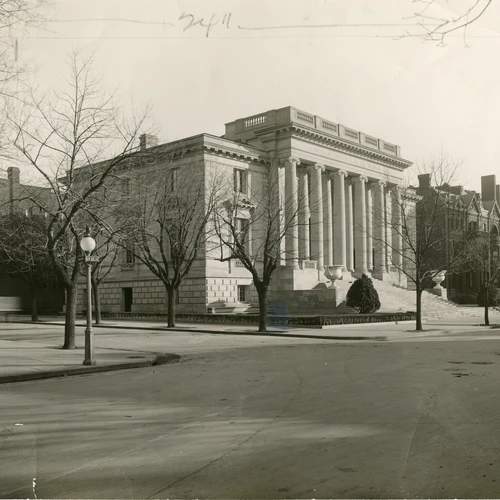
Carnegie's historic headquarters building at 16th and P Streets in Washington D.C. is completed. The building was designed by the New York firm of Carrere and Hastings and served as the Institution's administrative headquarters for over a century.
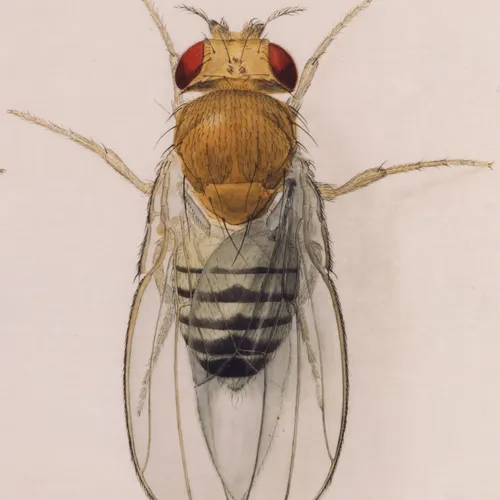
Genetics pioneer Thomas Hunt Morgan discovers a mutation that leads to the chromosomal theory of heredity. He went on to win the Nobel Prize in Physiology or Medicine in 1933.
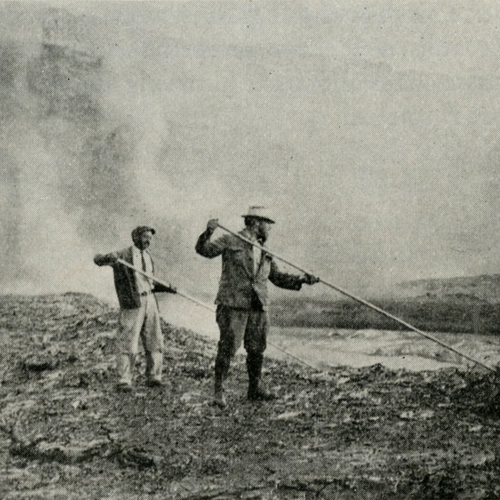
Carnegie's Frank Perret and collaborators collect volcanic gases at Hawaii's Kilauea volcano and help establish the Hawaiian Volcano Observatory at the edge of the Kilauea caldera.
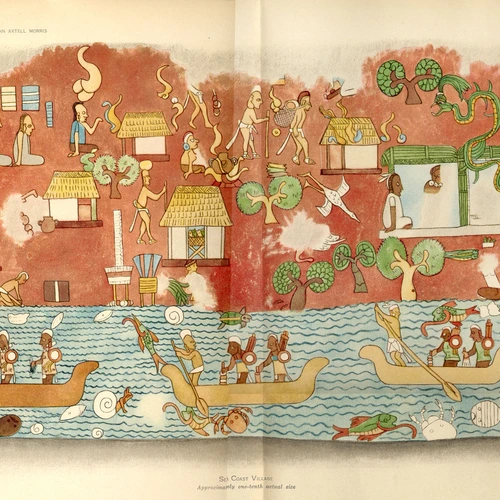
Carnegie initiates archaeology research in Mexico and Central America, which continued until 1957 and is regarded as a 'golden age' in Maya archaeology.
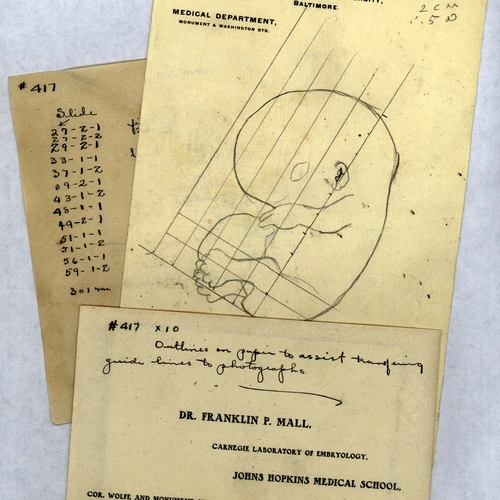
The Department of Embryology is founded to manage and study an embryo collection that became the largest in the world. Scientists used the collection to develop a fundamental description of human development and conduct path breaking experimental studies.
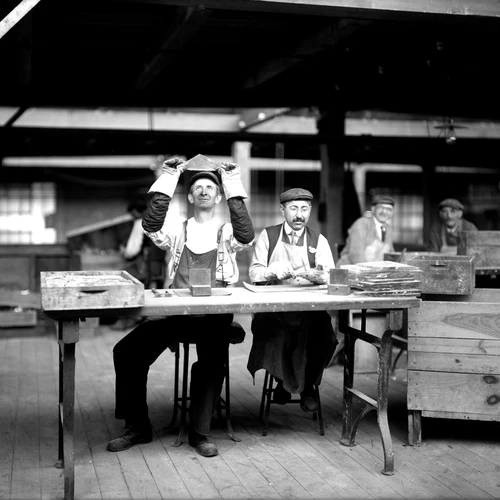
Scientists at Carnegie's Geophysical Lab modernize American optical glass-making industry during WWI.
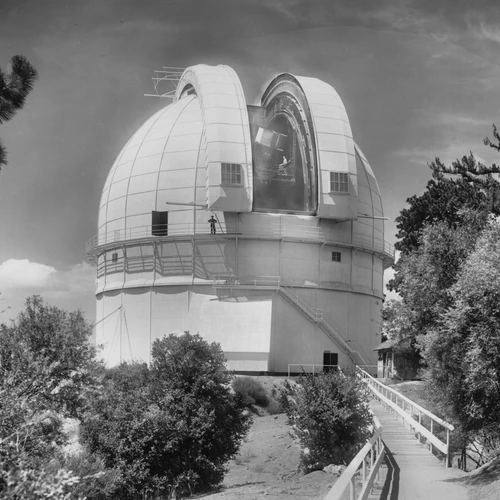
The 100-inch Hooker telescope at Mount Wilson Observatory sees first light. The Hooker telescope was the largest in the world from 1917-1949 and enabled discoveries that transformed our understanding of the scale and nature of the universe.
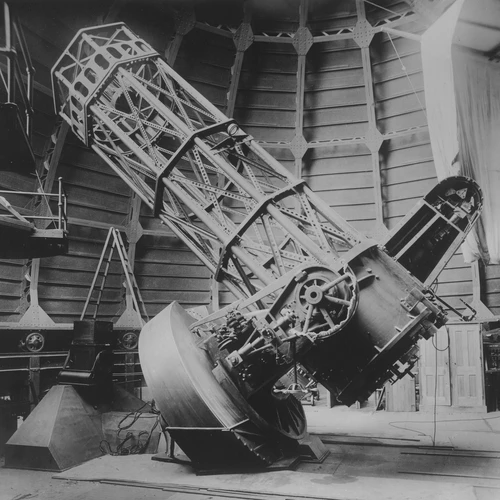
Harlow Shapley maps the globular cluster system of the galaxy and finds its center, toppling the almost 400-year-old Copernican model of a Sun-centered universe.
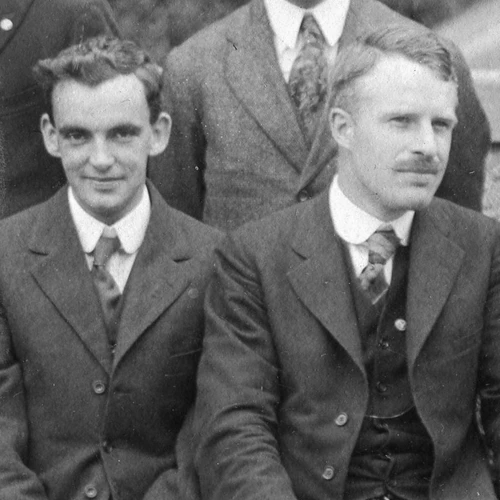
Erskine Williamson and Leason Adams determine density structure of Earth's interior and metallic core, helping to lay the groundwork for the modern study of planetary interiors.
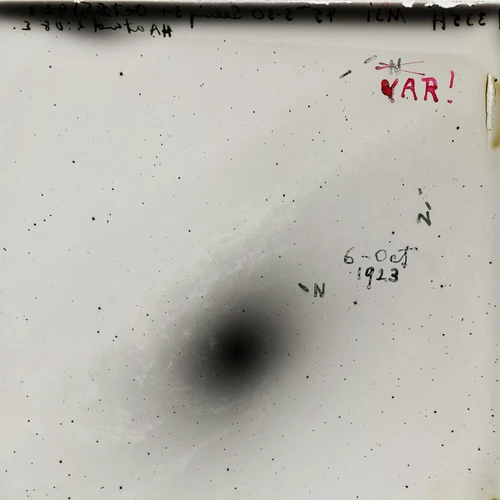
Edwin Hubble discovers the first Cepheid variable star in M31 proving that the universe exists beyond our Milky Way galaxy.
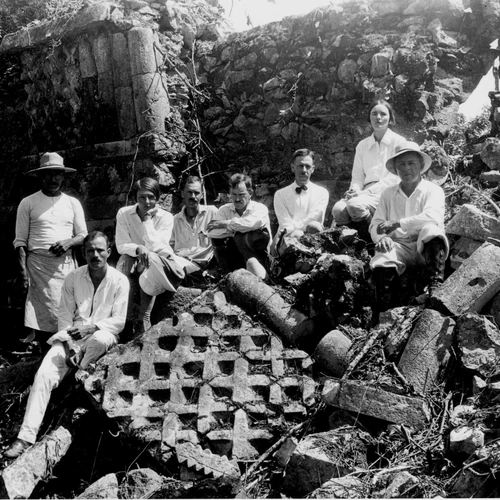
Carnegie archaeologists begin excavation at the Maya site at Chichén Itzá on the Yucatán peninsula. Over the following decade they excavated and rebuilt more than a dozen major structures and made preliminary studies of dozens more.
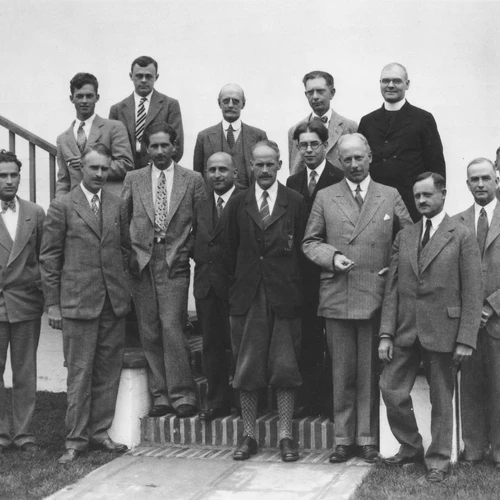
Carnegie and Caltech establish a seismology laboratory in Pasadena, California.
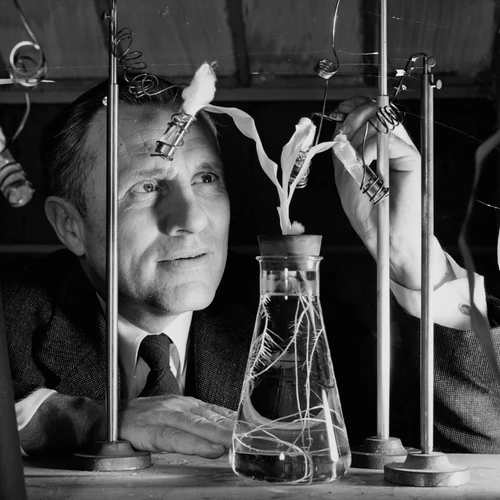
Herman Spoehr publishes the landmark book, Photosynthesis.
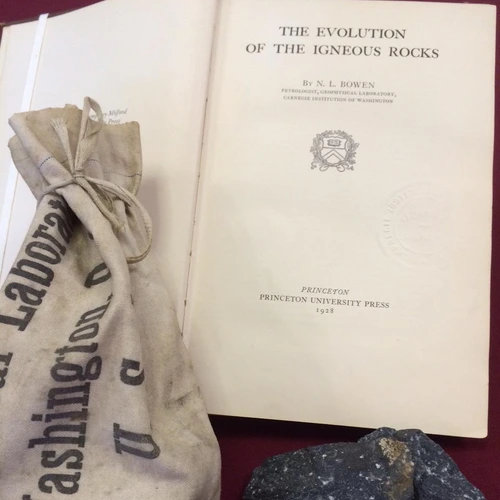
Carnegie petrologist Norman Bowen publishes The Evolution of the Igneous Rocks, the most influential book on petrology in the 20th Century.
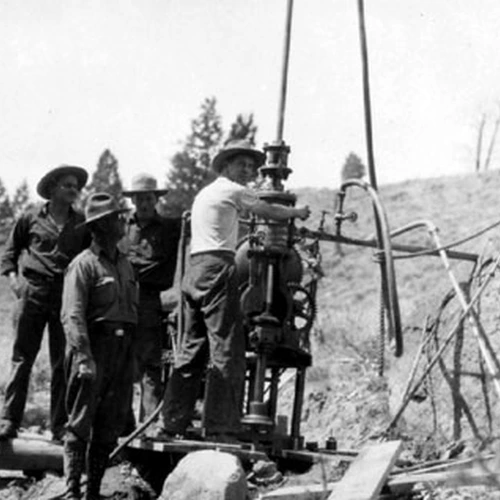
Carnegie scientists E.T. Allen and A.L. Day drill the first scientific boreholes in Yellowstone National Park to explore the geyser basins. Six years later, Carnegie published the classic Hot Springs of the Yellowstone National Park.
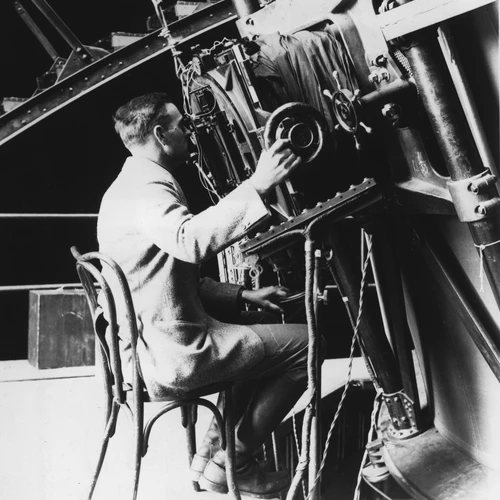
Edwin Hubble discovers that the universe is expanding.
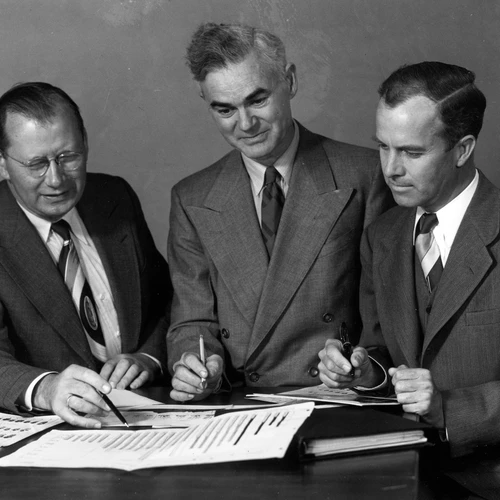
The founding fathers of modern plant population genetics Jens Clausen, David Keck, and William Hiesey initiate their classic transplant and hybridization research at Carnegie's alpine stations.
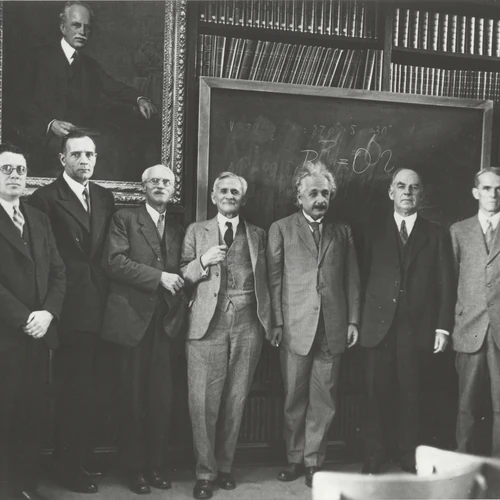
Meeting with physicists and astronomers in the Carnegie Observatories library, Albert Einstein announced that although he had been famously resistant to Edwin Hubble's assertion that the universe was expanding, the visit had changed his mind.
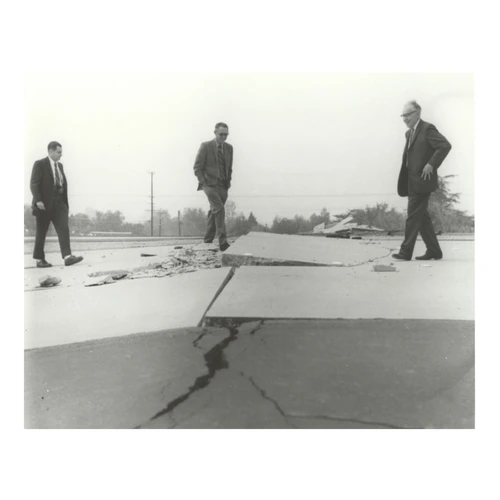
Charles Richter develops the "Richter scale" for measuring the strength of seismic earthquakes.
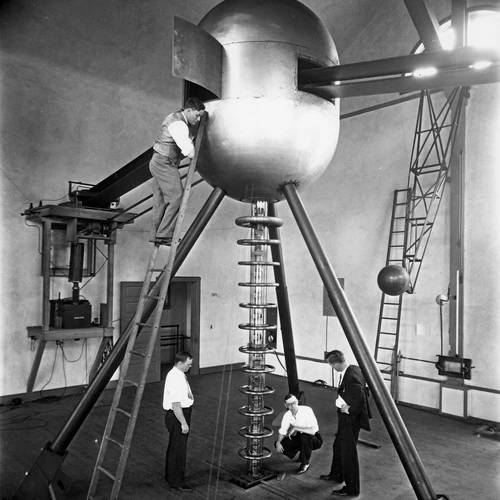
Carnegie physicists confirm the existence of the strong nuclear force using the two-meter Van de Graaff electrostatic generator.
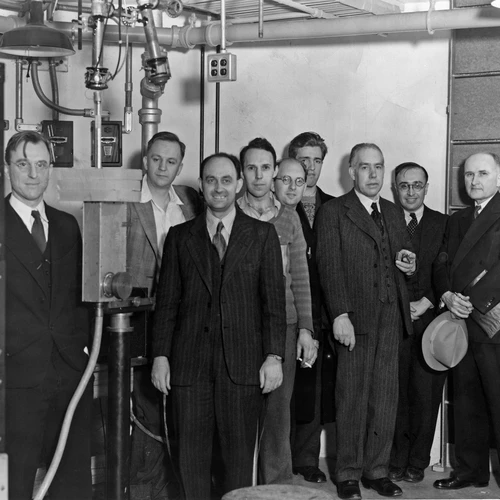
Uranium fission is demonstrated at Carnegie's research campus in Washington, D.C. just six weeks after the discovery of fission by German scientists.
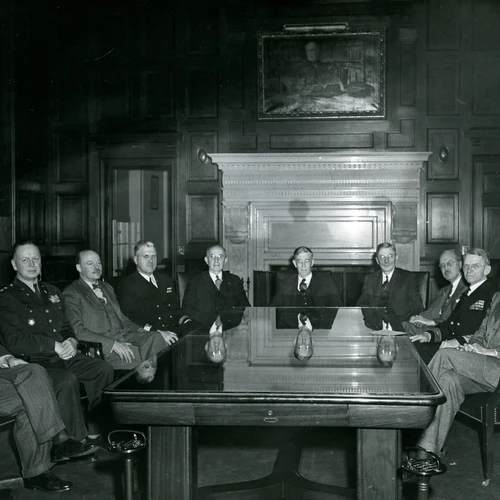
Franklin Roosevelt authorizes Carnegie president Vannevar Bush to oversee the coordination of scientific research and development activities during World War II.
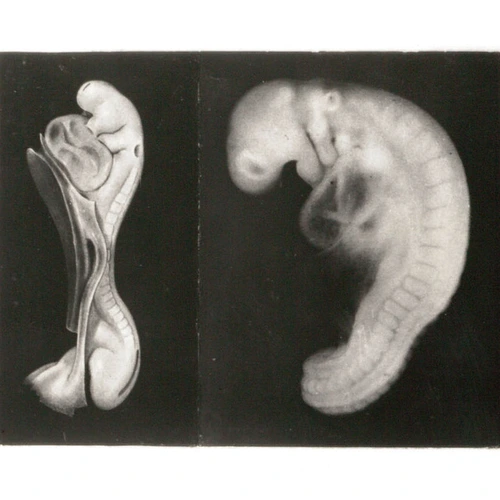
Developmental Horizons in Human Embryos is published, solidifying the Carnegie Stages, which provide a unified developmental chronology of the vertebrate embryo.
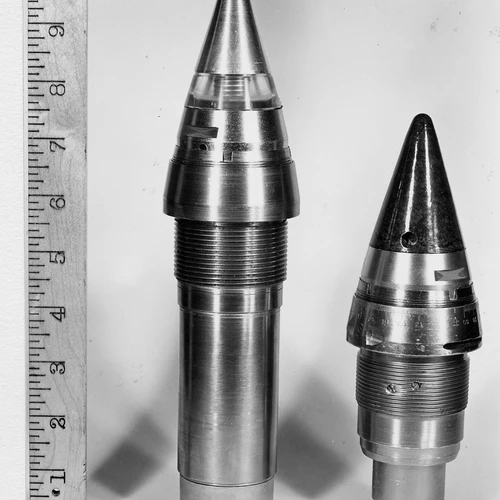
Carnegie scientists develop the proximity fuze, aiding the Allies' World War II efforts.
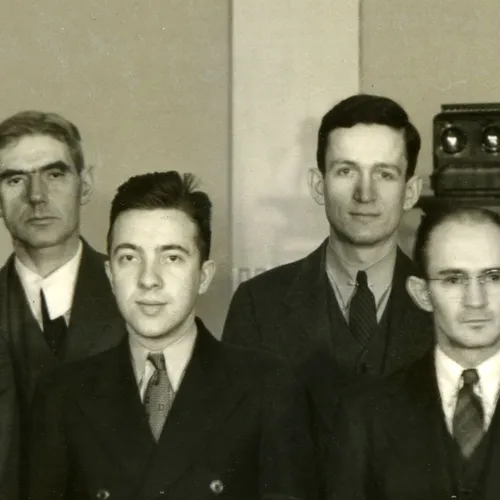
Carnegie inaugurates a postdoctoral fellowship program where young investigators study with established scientists in their field before moving on to begin scientific careers of their own. Today, Carnegie is renowned for its fellowship programs.
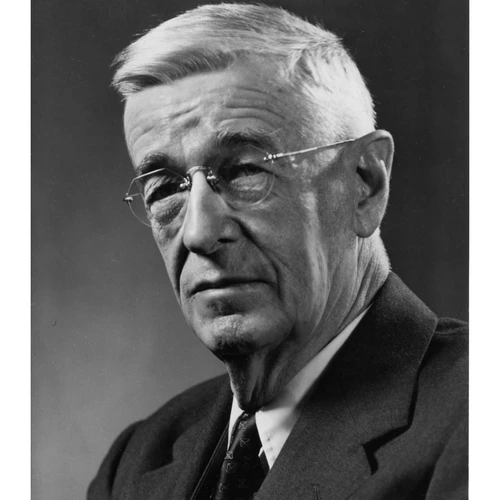
Carnegie president Vannevar Bush publishes the seminal Science, the Endless Frontier, giving birth to our national scientific enterprise.
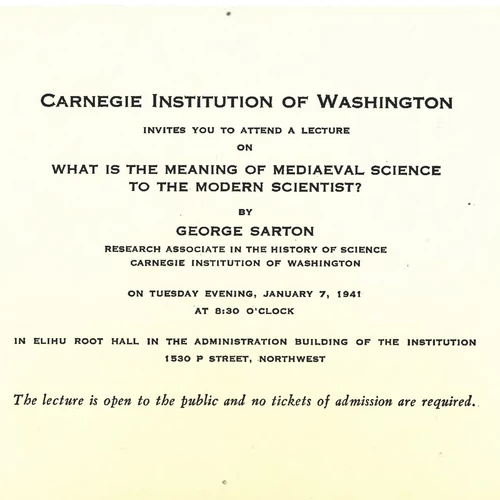
George Sarton completes the final volume of his Introduction to the History of Science. Carnegie supported Sarton, the father of the discipling of the history of science, for thirty years, providing funding for his writing and lecturing.
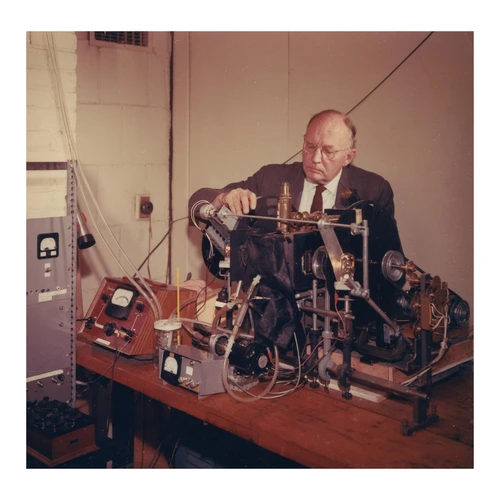
C. Stacy French invents the "French Pressure cell," used to study cellular structure and processes in plants.
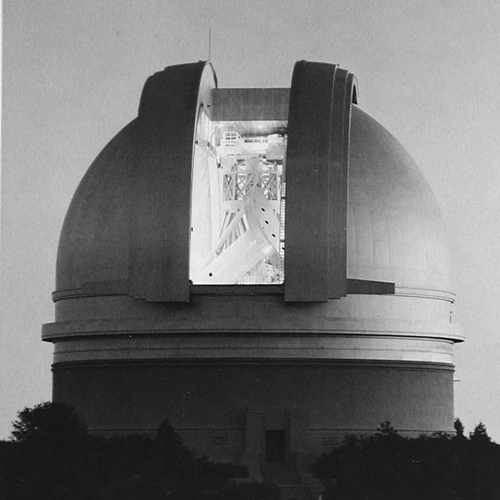
The 200-inch Hale telescope on Palomar see first light, replacing the 100-inch Hooker Telescope as the largest in the world. The joint Caltech-Carnegie Mount Wilson and Palomar Observatories partnership lasted until 1980.
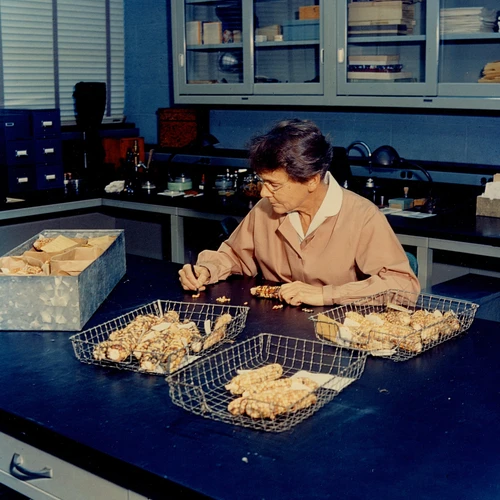
Barbara McClintock discovers transposons or "jumping genes."
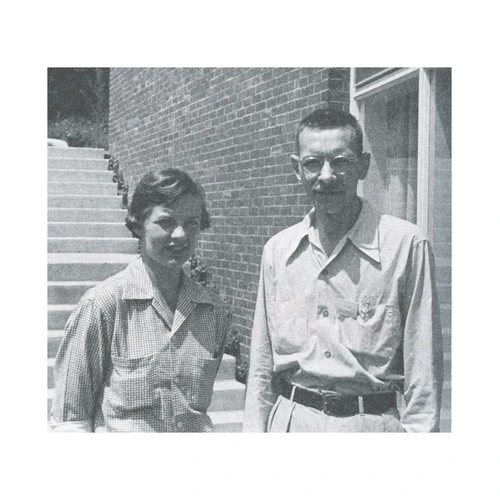
Alfred Hershey and Martha Chase prove that DNA, not protein, carries genetic material.
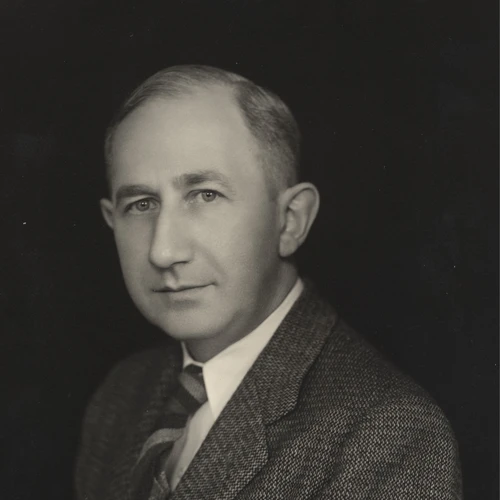
Walter Baade recognizes the phenomenon of stellar populations and starts a revolution that led to our understanding of the nature of stars, their life cycles, and the evolution of the Milky Way Galaxy.
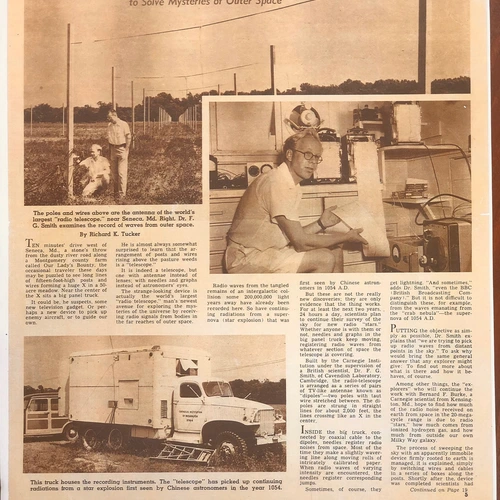
Bernard Burke and Kenneth Franklin detect the first radio emissions from another planet Jupiter. The discovery marked the birth of planetary radio astronomy and opened a new window into the study of planetary magnetospheres.
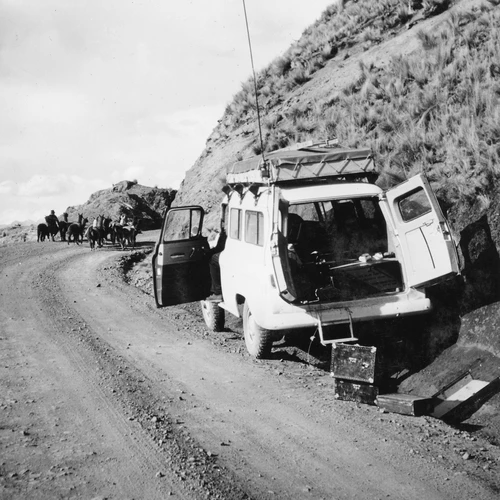
Carnegie Andes Expedition during International Geophysical Year initiates collaborative geoscience research in South America that continues today.
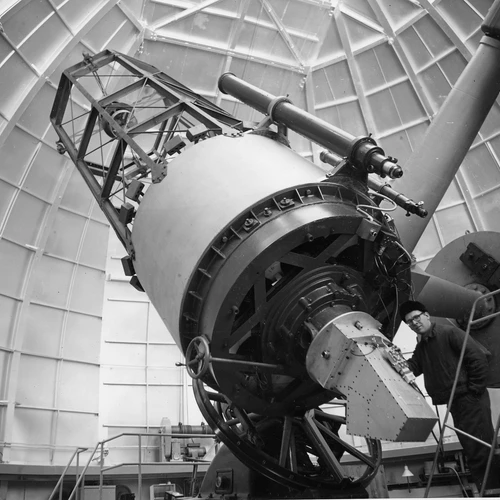
Installation of the Carnegie image tubes begins at observatories worldwide, allowing existing telescopes to see farther than ever before.
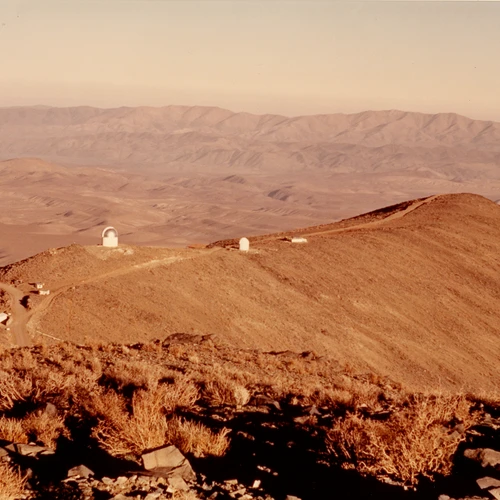
Carnegie begins construction of Las Campanas Observatory in Chile's Atacama Desert, a site chosen for its ink-dark skies and dry stable air, which provide ideal observing conditions for the some of the best "seeing" in the world.
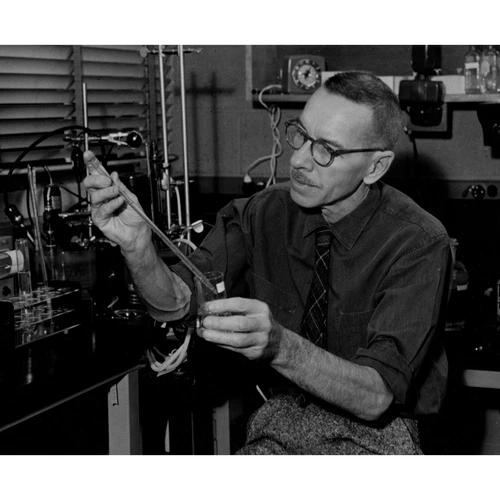
Alfred Hershey shares the Nobel Prize in Physiology or Medicine for his work in genetics.
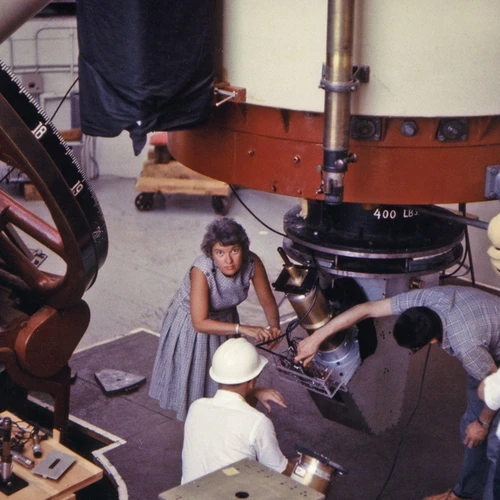
Vera Rubin and Kent Ford establish the initial confirmation of the existence of dark matter.
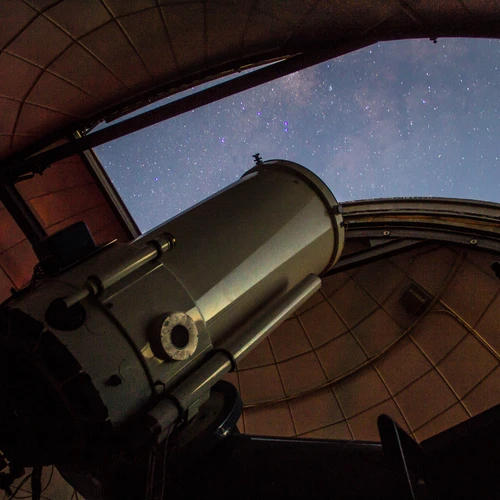
The 40-inch Swope Telescope at Las Campanas Observatory sees first light.
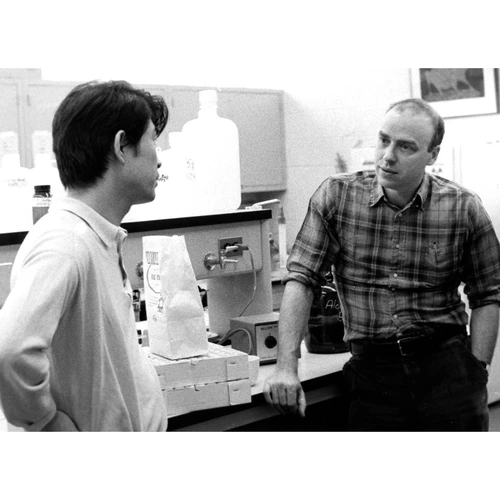
Future Nobel prize winner, Tasuku Honjo, begins a postdoctoral fellowship in the Brown Lab at Carnegie.
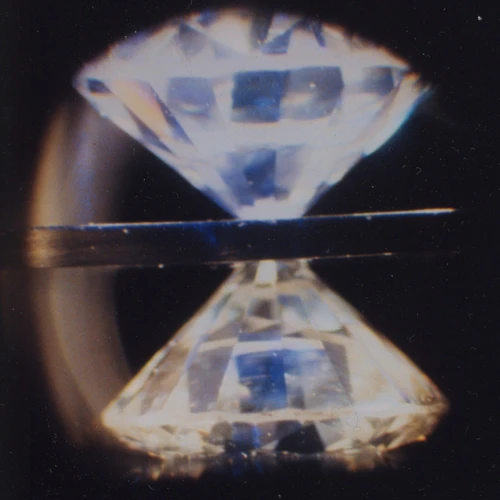
Ho-Kwang Mao and Peter Bell break the megabar barrier using a diamond-anvil cell, recreating in the lab the extreme pressures that exist at the very edge of the boundary between the Earth's mantle and core.
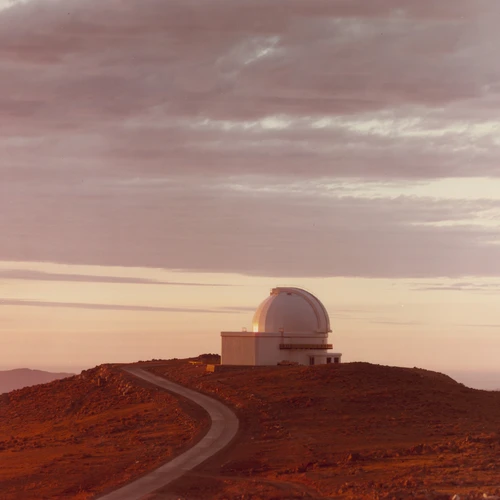
The 100-inch du Pont Telescope at Las Campanas Observatory sees first light.
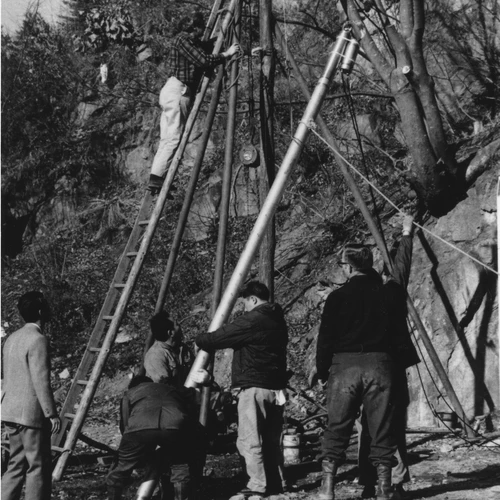
Carnegie seismologists detect slow, silent earthquakes in Japan's lzu peninsula. The discovery was made with the Sacks-Evertson borehole strainmeter, an instrument developed at Carnegie to measure minute changes in the strain of rocks.
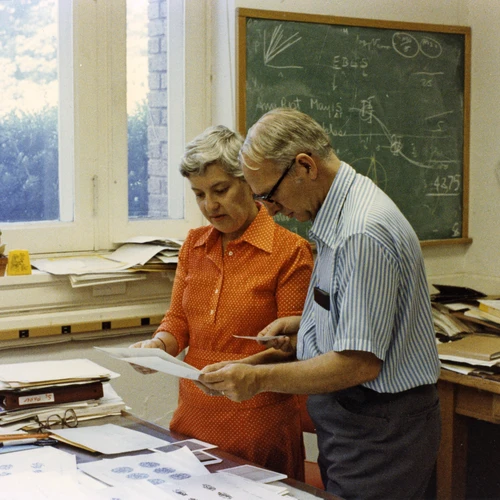
Vera Rubin, Kent Ford, and Norbert Thonnard solidify the confirmation of the existence of dark matter with data from additional galaxies.
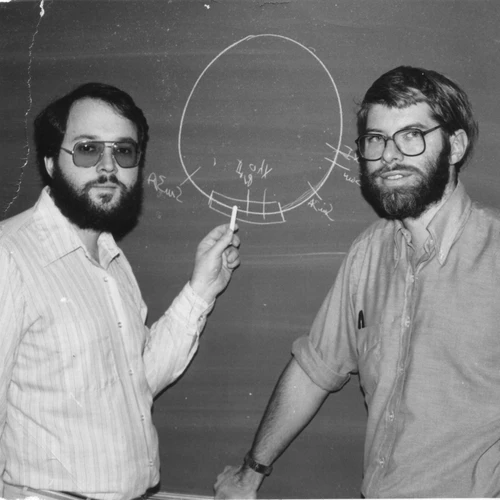
Allan Spradling and Gerald Rubin discover a new method of gene transfer, showing that an external gene could be successfully inserted and expressed in a fruit fly’s germ cells using P-elements.
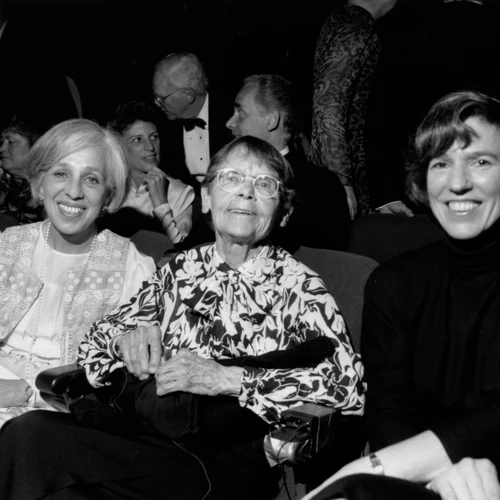
Barbara McClintock receives the Nobel Prize in Physiology or Medicine for her discoveries in genetics.
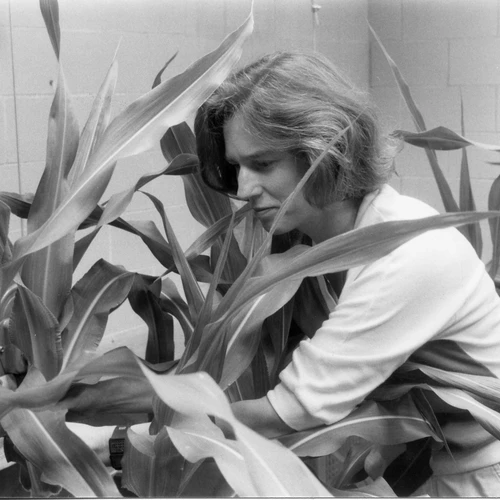
Nina Fedoroff is the first to clone and characterize maize transposons, or "jumping genes." With this pioneering work, Fedoroff advanced with molecular methods the genetic discoveries that Carnegie geneticist Barbara McClintock had made decades earlier.
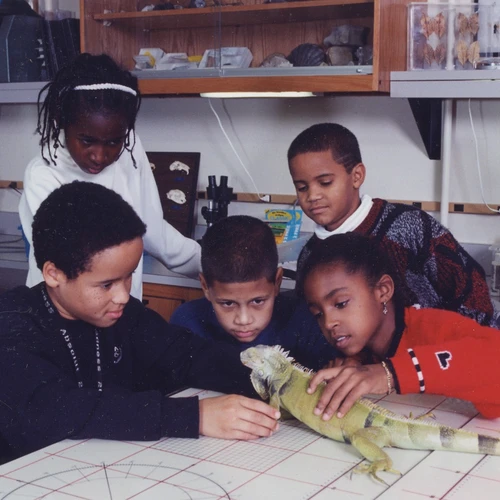
Carnegie Institution initiates educational program First Light, and later the Carnegie Academy for Science Education (CASE), for elementary school children and teachers. Since 1989, CASE programs have served more than 1,600 students and 1,200 teachers.
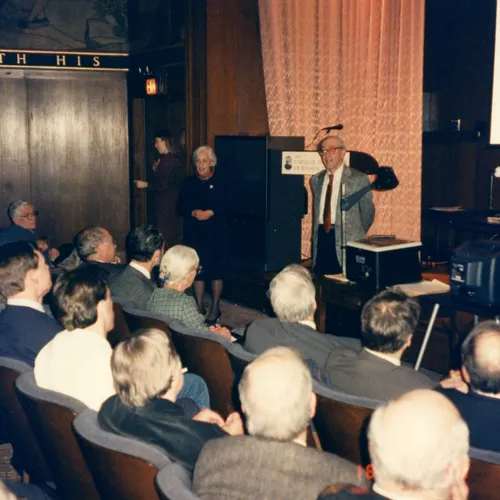
Carnegie launches the Capital Science Evening Lectures series, which provides the public a unique opportunity to connect with some of the most gifted investigators in science and hear the stories behind their discoveries.
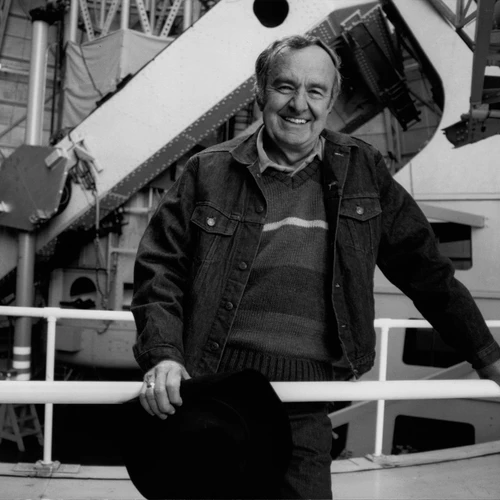
Carnegie's Allan Sandage is awarded the Crafoord Prize for his "contributions to the study of galaxies, their populations of stars, clusters and nebulae, their evolution, the velocity-distance relation (or Hubble relation), and its evolution with time."
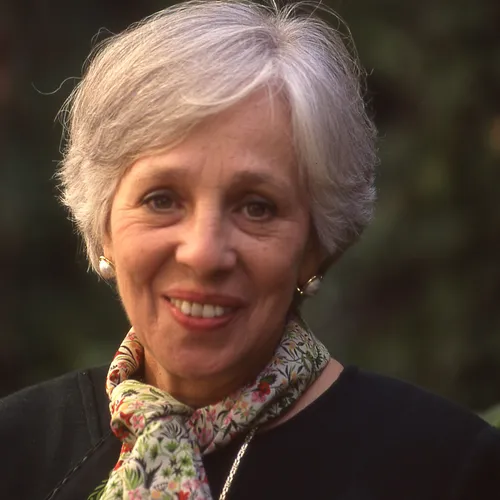
Carnegie President Maxine Singer wins the National Medal of Science for her outstanding scientific accomplishments and her deep concern for the societal responsibility of the scientist."
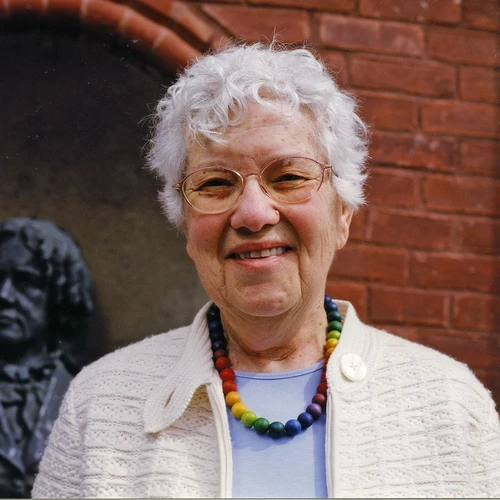
Vera Rubin is awarded the National Medal of Science for her "significant contributions to the realization that the universe is more complex and more mysterious than had been imagined."
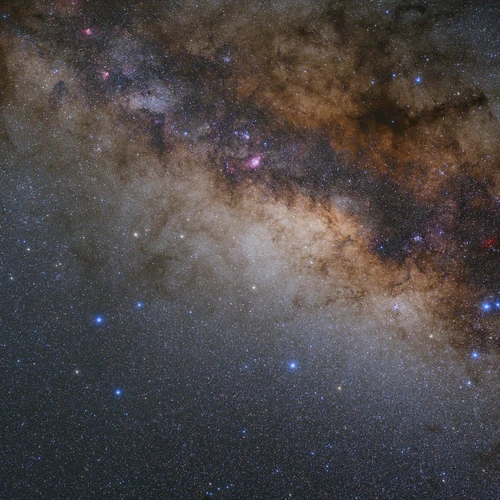
Mark Phillips establishes the relationship-informally named after him-that allows Type la supernovae to be used as standard candles for measuring the expansion rate of the universe.
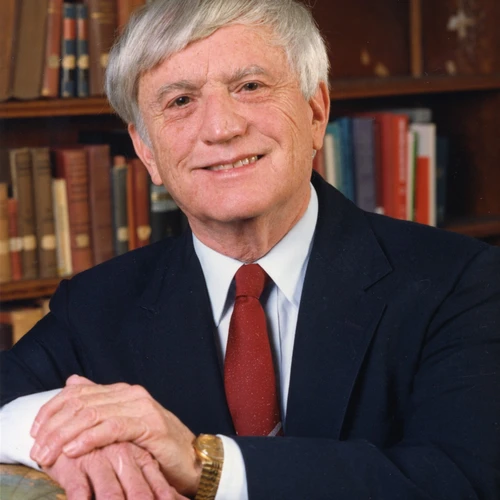
George Wetherill receives the National Medal of Science for his contributions to the development of radiometric age-dating techniques and theoretical models simulating the evolution of the inner solar system.
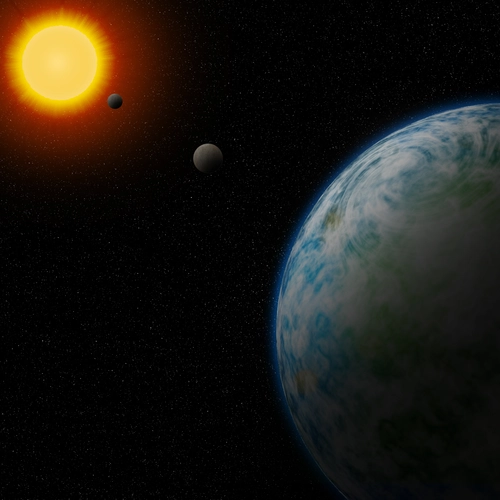
Carnegie is named to the inaugural class of the NASA Astrobiology Institutes, established to address fundamental problems like How does life begin and evolve? Is there life elsewhere in the Universe? What is the future of life on Earth and beyond?
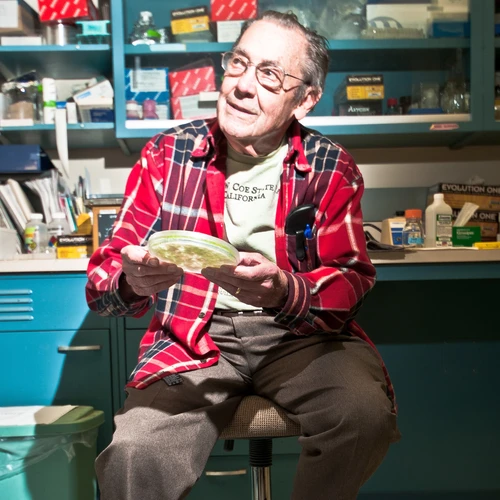
Winslow Briggs' lab identifies blue-light receptor for phototropism, named phototropin, which orients a plant toward blue wavelengths. This discovery represented a crucial step in understanding how plants grow and how that growth is regulated by light.
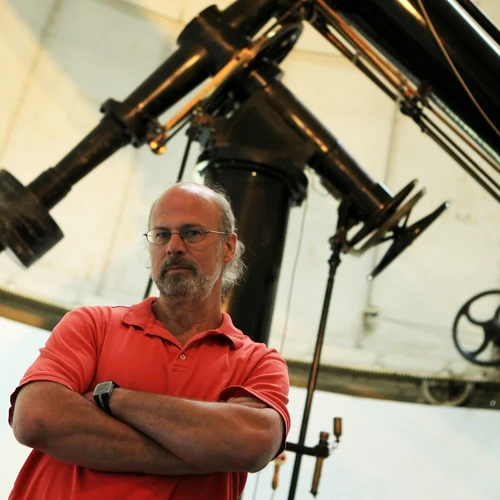
Paul Butler initiates observational exoplanet research at Carnegie using precision radial velocity method. Butler leads the discovery of 70 of the first 100 extrasolar planets detected.
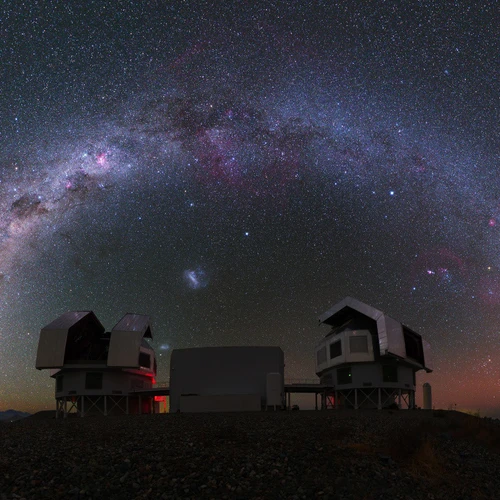
The 6.5-meter Magellan Baade telescope at Las Campanas Observatory sees first light. Two years later the 6.5-meter Magellan Clay telescope would see first light.
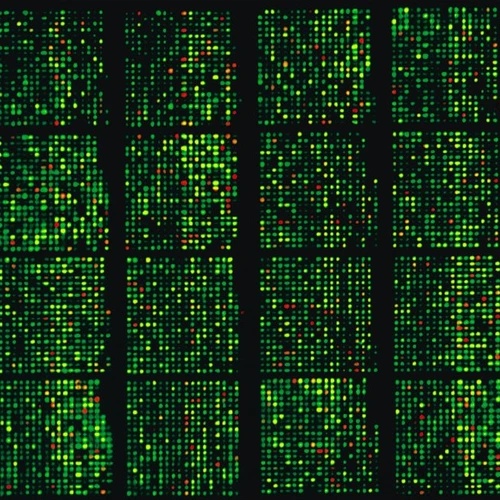
The genome of plant Arabidopsisis completed by a team of scientists, including Carnegie plant biologists.
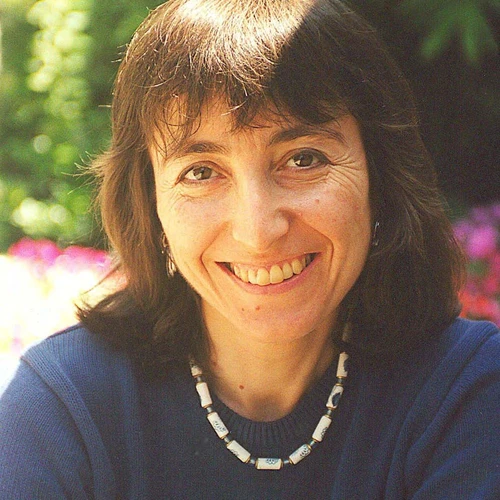
Carnegie astronomy Wendy Freedman and team publish a new measurement of the expansion rate of the universe, or Hubble Constant, using Hubble Space Telescope observations to reach more distant Cepheid variables.
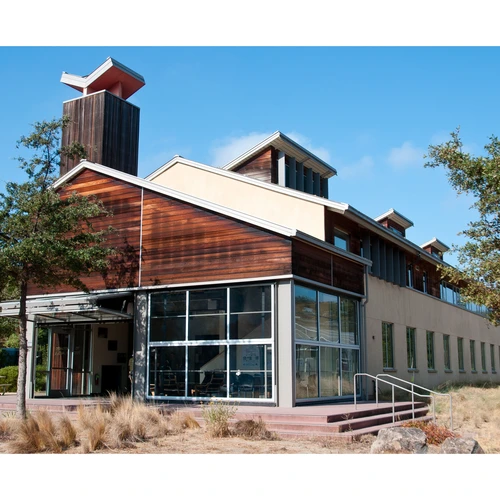
Carnegie establishes the Department of Global Ecology, the first new department in 70 years. The department's mission focuses on understanding the ways that biological, physical, and human factors interact to shape the Earth's ecosystems.
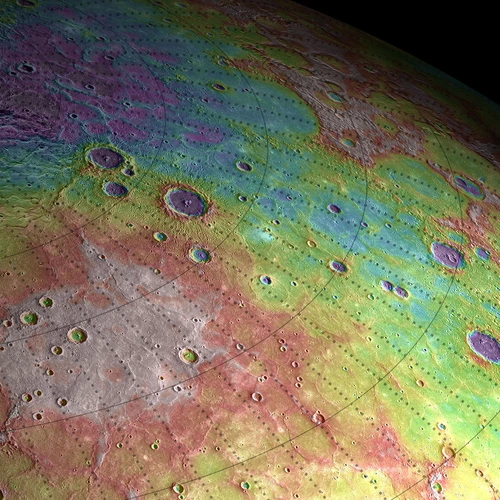
MESSENGER Mission to Mercury is launched. Carnegie's Sean Solomon is the project's principal investigator and Larry Nittler the deputy principal investigator.
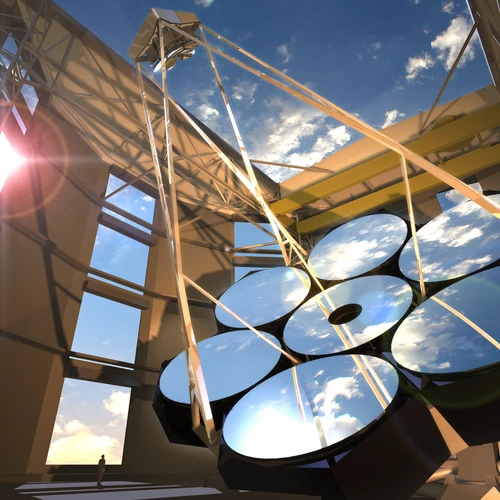
Scientists and engineers from Carnegie, Harvard University, Smithsonian Institution, and the University of Arizona develop the conceptual design for the Giant Magellan Telescope, which will be built at Carnegie's Las Campanas Observatory.

Carnegie scientists discover the world's oldest diamonds, the inclusions in which function as time capsules that record ancient movements of continents and the origins of plate tectonics.
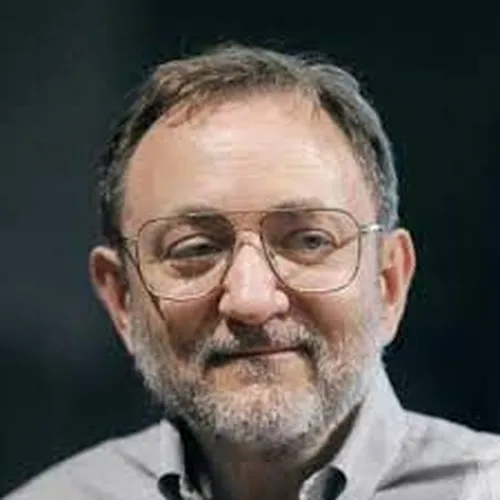
Andrew Fire wins Nobel Prize for his discovery of RNA interference.
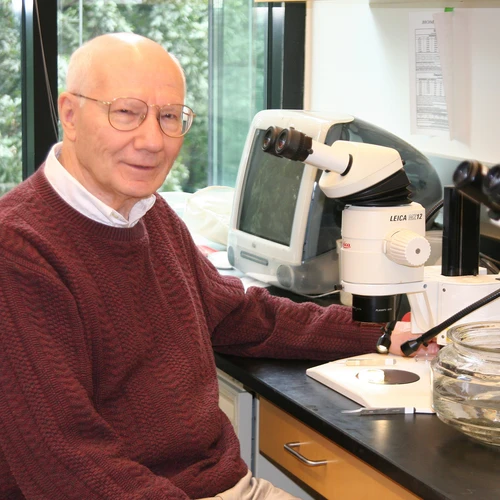
Joseph Gall is awarded the Lasker Special Achievement Award in Medical Science in recognition of his distinguished career as a founder of modern cell biology and the field of chromosome structure and function, and his championing of women in science.
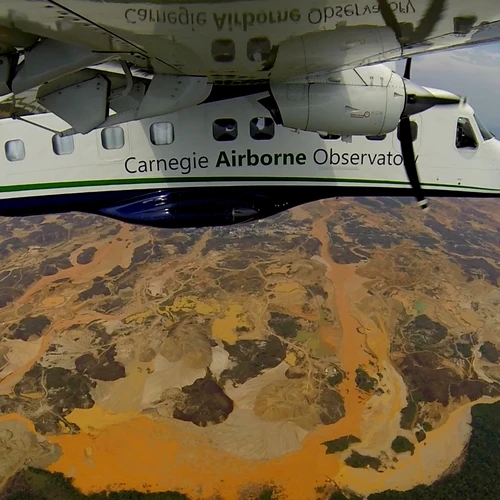
The Carnegie Airborne Observatory flying laboratory is launched, opening a new, high-resolution window on the changing composition of our land and ocean environments.
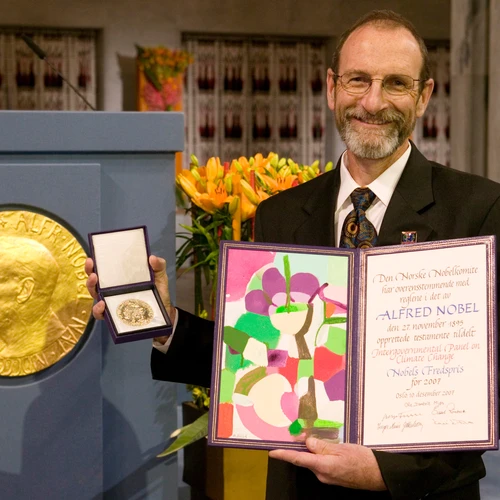
Chris Field heads up the UN's Intergovernmental Panel on Climate Change Working group II, which looked at impacts, adaptation and vulnerability from climate change. He was selected as a member of the group to receive the Nobel Prize alongside Al Gore.
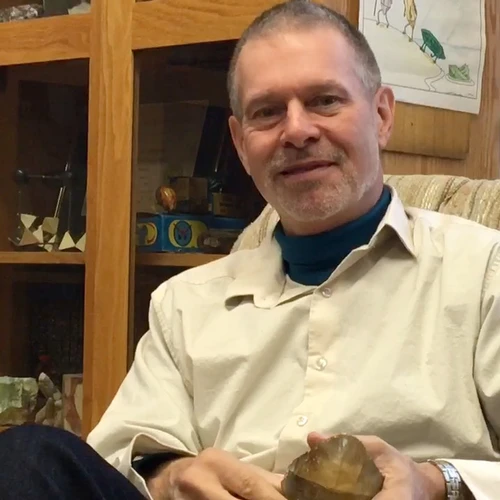
Robert Hazen and colleagues introduce "Mineral Evolution" (and later "Mineral Ecology") as a new framework for understanding the formation, occurrence, and properties of minerals in the Earth and Solar System.
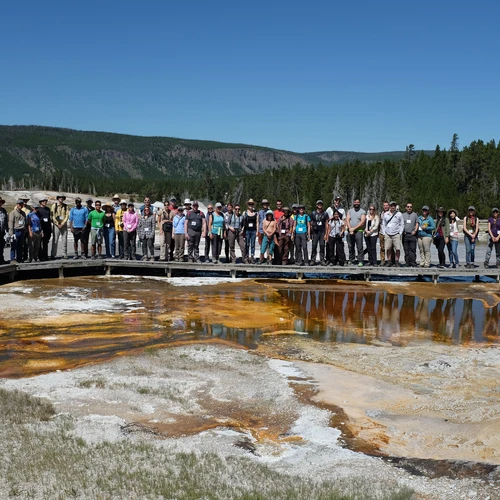
The Deep Carbon Observatory, an international ten-year mega project headquartered at Carnegie, is launched to investigate the nature of carbon in Earth's deep interior.
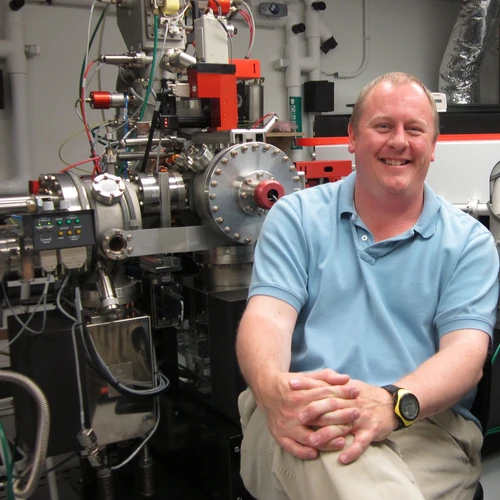
Erik Hauri leads research that discovers water in the Moon's interior.
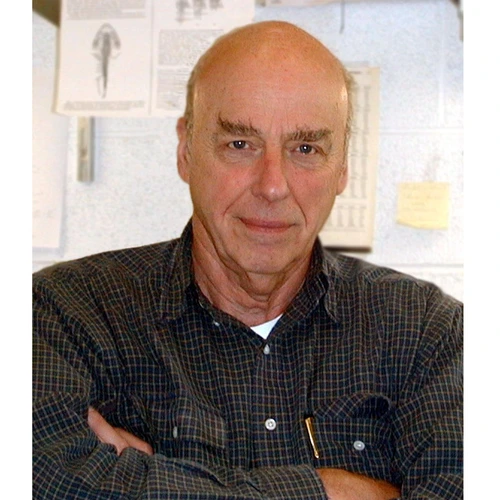
Donald Brown wins the Lasker-Koshland Award for "exceptional leadership and citizenship in biomedical science-exemplified by fundamental discoveries concerning the nature of genes; and by selfless commitment to young scientists."
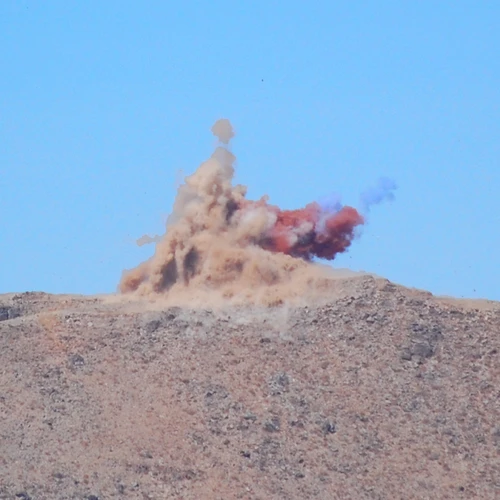
Site preparation for the Giant Magellan Telescope begins at Las Campanas Observatory, with the first of 70 controlled blasts to level the highest mountaintop.
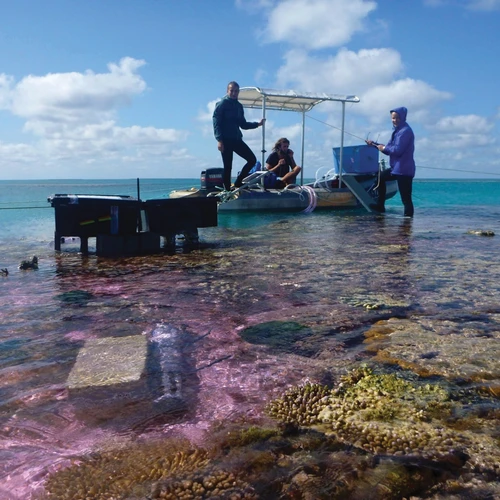
Ken Caldeira and colleagues' study of ocean acidification provides evidence that deep cuts in carbon dioxide emissions are required to prevent the coral reefs from around the world from dying off.
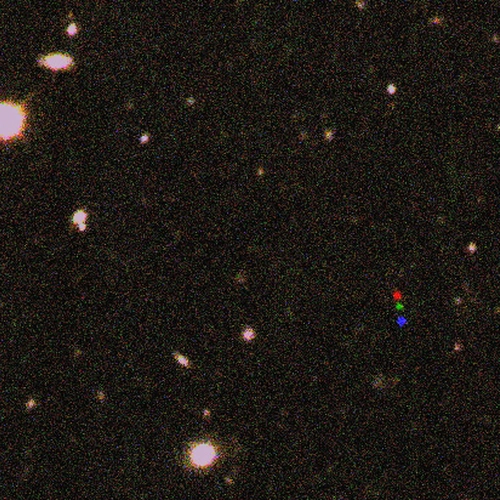
Scott Sheppard announces the discovery of 2012 VP113, then the most-distant known object in the Solar System, kicking off the hunt for a ninth planet lurking on the fringes of our Solar System.
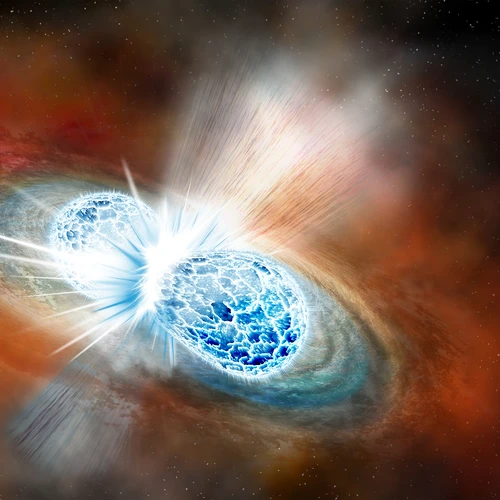
Using Carnegie's Swope telescope, a team of Carnegie astronomers provides the first-ever glimpse of two neutron stars colliding.
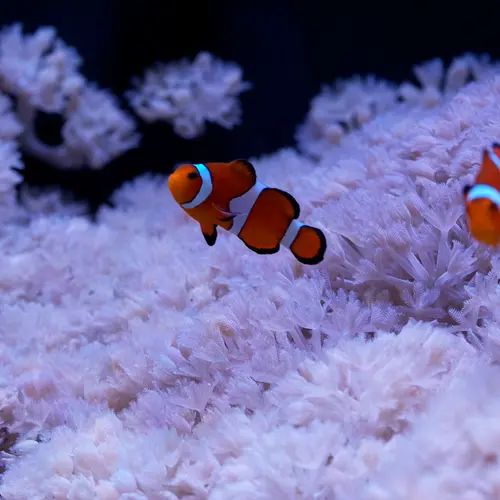
The Carnegie coral facility is established. The facility enables study of coral symbiosis and work with coral and sea anemone model organisms.
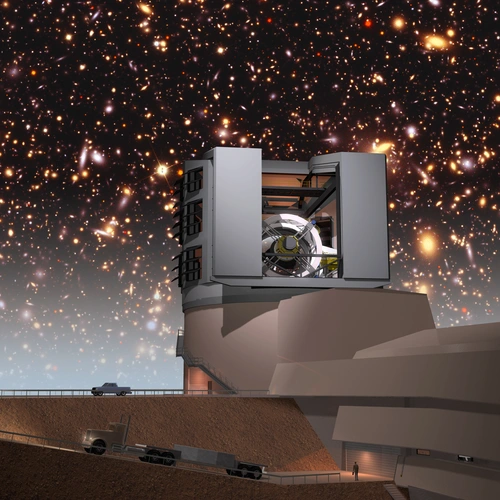
The Large Synoptic Survey Telescope is renamed the Vera C. Rubin Observatory in honor of the late Carnegie astronomer whose research confirmed the existence of dark matter.
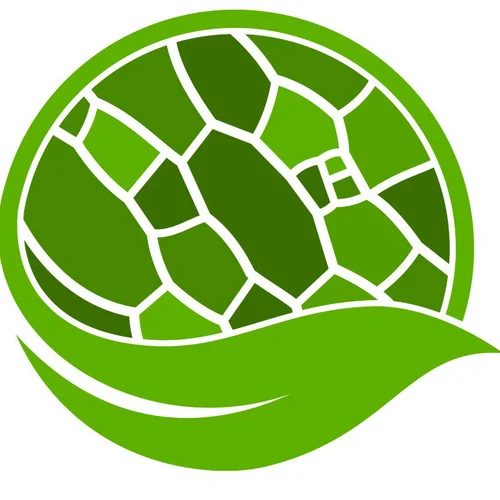
The Plant Cell Atlas project is launched. The initiative brought together more than 800 experts to develop a community resource that will comprehensively describe plant cell types, the molecules they manufacture, and the biochemistry that happens in them.
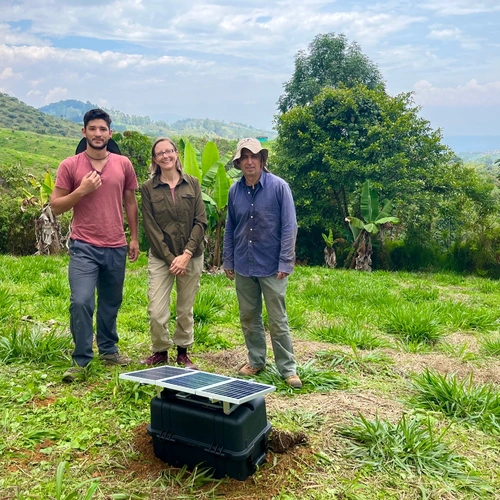
A team led by Carnegie's Lara Wagner is awarded A $2.7 million multi-disciplinary, multi-institutional NSF-Frontiers of Earth Science grant to study an active flat slab in the Colombia Andes.
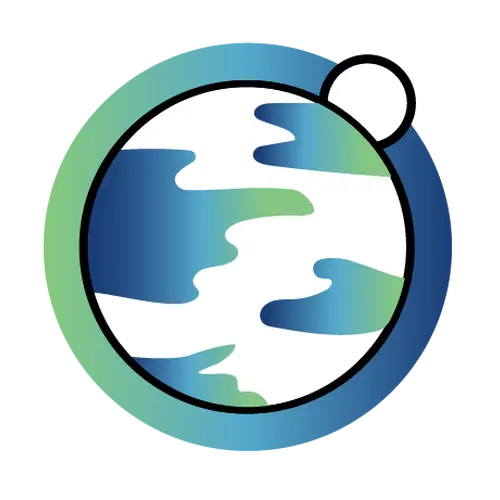
The interdisciplinary, multi-institution AEThER project is launched to understand the chemical makeup of our galaxy's most common planets with a goal of developing a framework for detecting chemical signatures of life on distant worlds.
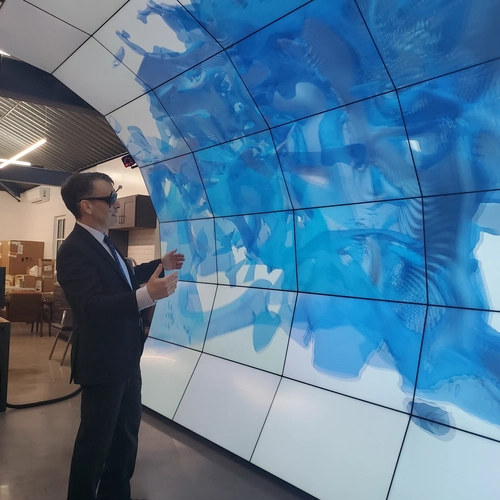
The Carnegie Theoretical Astrophysics Center is founded and construction is complete on its flagship initiative, the 3D virtual reality enabled visualization lab or Vizlab.
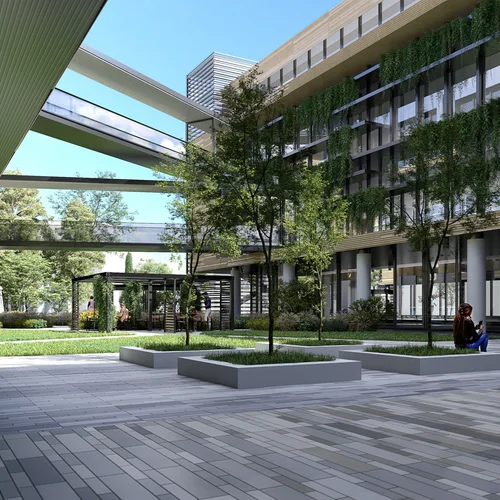
Carnegie President Eric Isaacs announces that the institution will expand its existing relationship with Caltech with a goal of broadening historic collaborations in astronomy and astrophysics and pursuing new opportunities in ecology and plant biology.
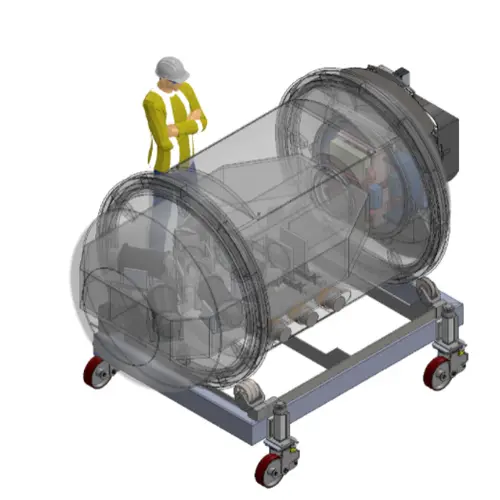
Carnegie astronomer-led teams are awarded funding from the Heising-Simons Foundation for MIRMOS and MagNIFIES, two groundbreaking instruments that will help reveal galaxy evolution and exoplanet formation and atmospheric makeup in unprecedented detail.
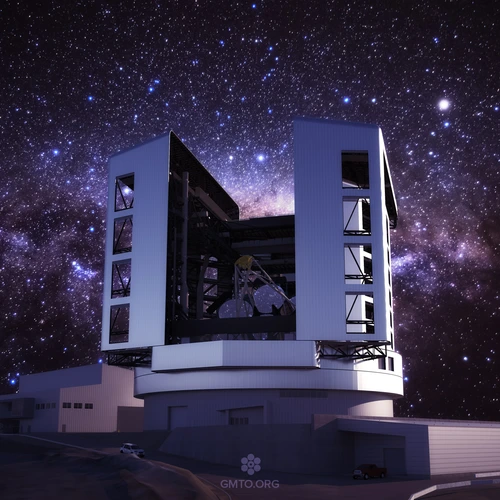
The National Academies names the Giant Magellan Telescope and U.S. Extremely Large Telescope program a top strategic priority.
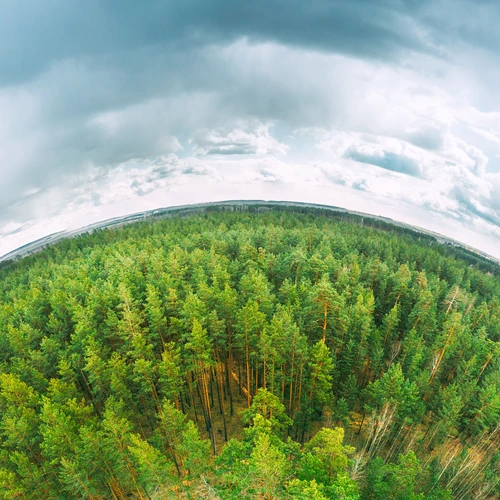
Carnegie launches the Biosphere Sciences and Engineering Division. The division will deploy an integrated, molecular-to-global approach to tackling the challenges of sustainability, resilience, and adaptation to a changing climate.
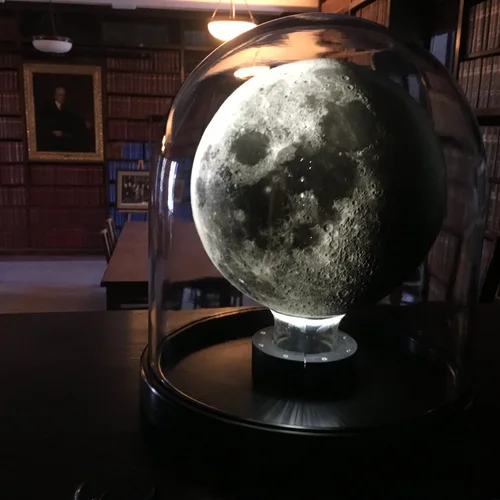
Visit Our Archives
Carnegie has extensive physical and digital materials documenting our institutional history. Learn about our archival resources, conduct research on our documentary heritage, or arrange a visit to one of our historic campuses.
Learn More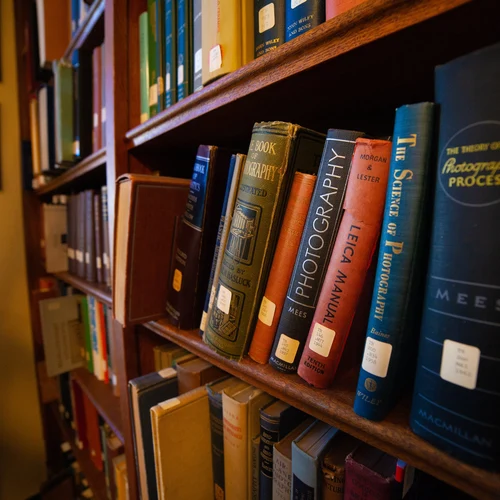
Explore Our Publications
Since our founding, Carnegie has published an annual Year Book highlighting research form across the institution. The Carnegie Monograph series, composed of more than 600 volumes, was published until 1994.
Learn More